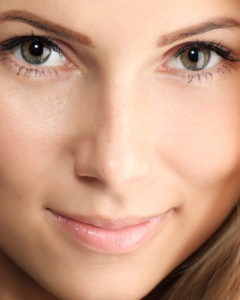Cosmetic Rhinoplasty Procedures: Nasolabial Angle Adjustment
Posted on April 10, 2019 The nasolabial angle is made up of two lines. The first one extends from the nasal tip to the area above the upper lip. The second line goes from the upper lip to the base of the nose, where the nostrils bifurcate. Nose tip rotation and nose projection can affect the degree of this angle.
The nasolabial angle is made up of two lines. The first one extends from the nasal tip to the area above the upper lip. The second line goes from the upper lip to the base of the nose, where the nostrils bifurcate. Nose tip rotation and nose projection can affect the degree of this angle.
The surgeon will, in most cases, seek to develop a 90 to 95-degree nasolabial angle in men and a 100 to 105-degree angle in women candidates. The surgeon can refine this angle through a combination of projection and rotation adjustment techniques.
plastic surgeon Dr. David Kim provides rhinoplasty to patients in Beverly Hills, Los Angeles, and surrounding locations.
Correcting Nose to Lip Angle and Bulbous Tip
The surgeon may make use of a full delivery technique to correct a bulbous nasal tip. In this procedure, they may suture the dome to the lower lateral cartilages while possibly adding a cartilaginous strut graft, if needed for support.
Wide and flared nostrils can be corrected using alar-based excisions if necessary. Any type of acute angle to the lip can be addressed by raising the tip, reducing the cartilaginous septum and caudal membranous.
The other techniques to treat this condition include reducing the anterior septal angle to allow upward tip rotation and techniques that change the tip itself or tripod of the nose as well as lengthen the medial crus or columella so that it rotates and projects upward.
The surgeon may shorten the lateral or gull wing aspect of nose tip cartilages. These techniques may be used together to narrow the tip and improve the columellar labial angle at the same time.
Finally, the surgeon can perform the alar base reduction along with a rhinoplasty and narrow the base to reduce its width.
More than One Route
Various alternatives exist to correct the angle between the nasal columella and lip. Using caudal extension grafts and plumping grafts can effectively project the nasolabial angle.
The development of proper tip rotation is a standard aspect of rhinoplasty. It is often used in combination with creating better tip definition. But the definition is limited by thicker skin.
In addition, the surgeon may use shaving away a portion of the septum at the anterior angle. However, a specific recommendation on this technique would necessitate an actual nose examination.
Lifting a Drooping Nose Tip
The tip often droops in patients with thick skin and heavy noses. There are various approaches to elevate the nose tip. The surgeon can reduce the septal length.
But most heavy noses require extra tip support. The surgeon accomplishes this through the use of cartilage grafts to offer strength to the tip and elevate it.
For first-time rhinoplasty patients, the ideal source of the graft material is the nasal septum. The surgeon can also make the tip cartilages narrower. To address excessively thick and hard skin and add more strength, a graft using the patient’s cartilage, called an extended shield graft, is often used as well.
Cosmetic surgeon Dr. David Kim receives patients from Beverly Hills, Los Angeles, and nearby areas for nose reshaping surgery. For more information on the surgical and non-surgical procedures and treatments by Cosmetic Plastic Surgeons Dr. David Kim and Dr. Eugene Kim. Click here to contact us today.
Serving Beverly Hills, Los Angeles, West Hollywood, Orange County, Southern California and surrounding areas.
